QuestionI have just taken in king chares cross that I found on the street, I beleive he was on the street for a week. I brought him to the vat and got him checked out, needed stitches and other treatments but the dog is very nervous, he is about 2 years old, he was never on a lead according to the Vet, he is extremely jumpy, he may have been abused, I don't know, he eats and drinks no problem and loves the treats. I have a 4 year old yorkie and haven't introduced them yet.Any help at all would be much appreciated, basicaly will I be able to restore his confidentce and will he grow out of this eventually? I' thinking maybe I have taken on something that I won't be able to fix, Regards
AnswerHi Marion,
Thank you for writing to me about your king charles spaniel cross. How wonderful that you have rescued this sweet, frightened dog and are giving him love and a forever home.
Because he's exhibiting signs of being nervous, I would recommend a full blood workup, paying special attention to his thyroid.
You can give him some Rescue Remedy. Put 12 drops into his water bowl and then rub some on him gums a couple of times a day.
Make sure that he isn't suffering from food allergies. If you see any signs of this then switch his food to Solid Gold Fish & Potato.
The most important thing is to give him a lot of exercise and stability. This means long, vigorous walks every day. Make a schedule that he can count on. Stability is crucial in developing a sense of confidence.
Give him a crate to sleep in if he is crate trained. This will provide a "cave" of his own..a place he can go to where he feels safe and secure. If he doesn't take to the crate, you can get something called an X-Pen (B-J Wholesale Pet Supply). Or give him a spot under a table or desk that might feel like a safe place to him. Put his bed or blanket there with a favorite toy.
Teach him simple commands that he can succeed with. Sit, down, stay, watch me, reinforcing with lots of treats. Help him learn these skills backward and forward. Then, practice these skills in progressively more challenging places in the coming days and weeks.
Work patiently with him and be sure you read up on dog behavior, dog training using positive methods, etc. There is a wealth of information on the internet that will help you to understand the emotional needs of dogs.
Your dog will do better in an environment that is familiar or has few distractions, and have more trouble in an environment with more distractions.
A good booklet about gradually socializing all dogs (cautious or not) is "The Cautious Canine: How to Help Dogs Conquer Their Fears" by Patricia McConnell.
When introducing adult dogs, opposite-sex introductions are generally the easiest, same-sex introductions more difficult.
To introduce your dogs to one another take your resident dog for a leashed walk in a neutral area - preferably a park or some place they are used to seeing non-threatening dogs. Have a third party approach with the new dog and, keeping both dogs on leashes, allow introductions to take place naturally. Discipline any dog that acts aggressively. Once introductions are made, take the new dog's leash yourself and continue to spend some time with both dogs. Do not sit on the ground with them - you need to be able to get out of the way if someone starts a fight and being taller than the dogs emphasizes your "alpha" status to them. Walk toward home, talking naturally to the dogs, but not showing preference to any of them.
When you get to the house, keep both dogs on the leash for the first half-hour. The new pup will want to walk around the perimeter of the yard, marking as he goes. Give him a drink of water, then put him in his crate or "spot." Spend some time with your resident dog and thenlet your resident dog get acquainted with the confined new one. Discipline any signs of aggression on anyone's part. Once all have lost interest in each other, give them each a treat - with the new dog still confined - and go on about your business for a while.
Later in the day, leash the new dog, allow him to relieve himself, and bring him into the house. For the first several weeks, bring im in the house only on a leash. This will give you control in case of a problem. Leash your resident dog, only if it shows aggression toward the new dog.
Dogs have a natural understanding of pack-order. You as human are - or should be - the alpha. But within the pack itself, there is a subordinate order that, when understood, will help you better modify their behavior. If you have only one resident dog, then it obviously considers itself higher in status than the newcomer. Don't allow the newcomer to challenge that assumption.\
You will probably be able to allow your dogs to play freely together within the first week. Be certain that no toys, bones or food are in the play area at first.
When feeding and giving treats, respect the pack's established order. The highest-ranking dog is fed first, with the newcomer getting his last. Do not feed the dogs together. Make sure that each has their protected spot.
If toys are available, always have more toys than dogs to lessen the chance of hoarding and fighting. If you walk both dogs at once, put the new dog on the traffic handle until you are certain you have complete control of him. An unexpected bolt from the end of a six-foot leash can have serious consequences for both of you.
Taking the time to introduce a new dog to the resident dog will pay off in fewer squabbles and quicker integration into the household.
Good luck. You're doing the right thing helping this dog learn the skills that will allow him to have a happy life.
Best Regards,
Shelley Davis

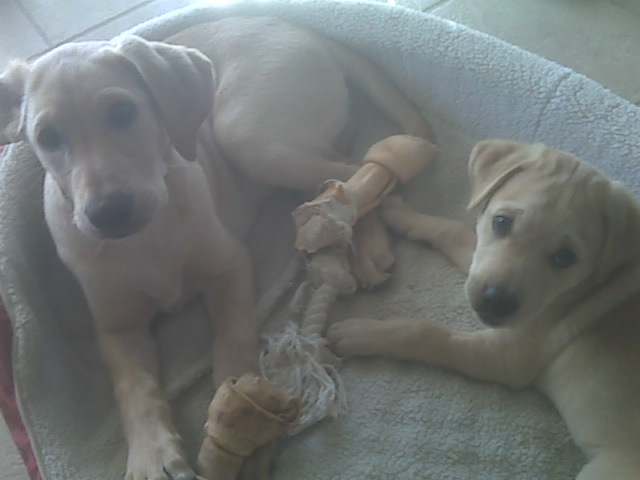 2 puppies one lab the other lab/shepherd mix
Question
Bailey ( female lab) a
I have a 3 1/2 month ol
2 puppies one lab the other lab/shepherd mix
Question
Bailey ( female lab) a
I have a 3 1/2 month ol
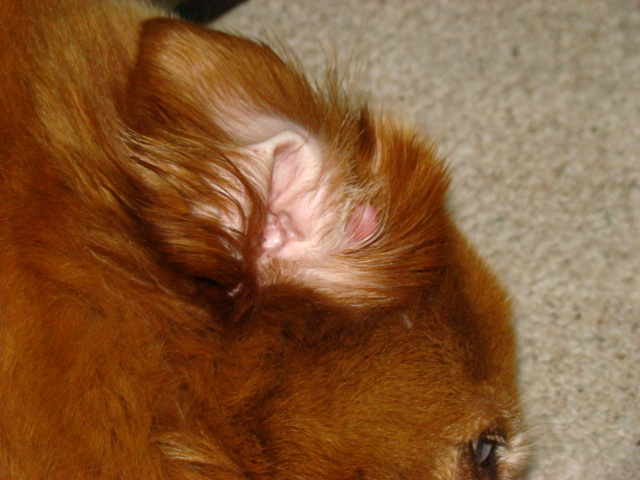 Ear Care
Question
Erins Ear 2
I had my dog groomed two days ago
Ear Care
Question
Erins Ear 2
I had my dog groomed two days ago
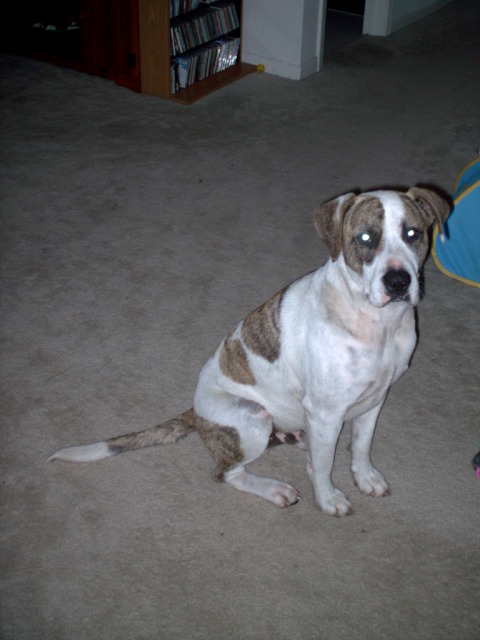 dog jumping fence
Question
dog
I have a 3 year old Staffordshire/Lab that
dog jumping fence
Question
dog
I have a 3 year old Staffordshire/Lab that
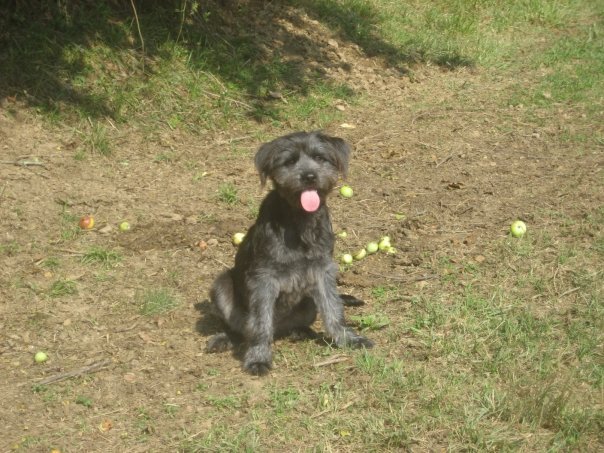 Help with my best friend :)
Question
cash
Hello!
&
Help with my best friend :)
Question
cash
Hello!
&
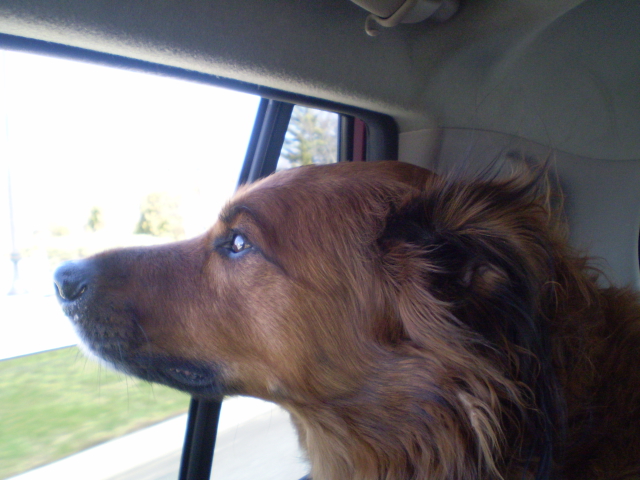 aggressive kids and dogs
QuestionI have a hyper aggressive 6 yr old who always p
aggressive kids and dogs
QuestionI have a hyper aggressive 6 yr old who always p